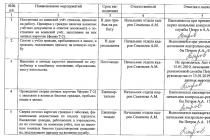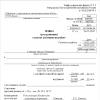The corporation originated from a pre-World War I conglomerate of companies producing tabulators and chronometers. Gradually, it turned into an international technological colossus, became a pioneer in the development of electronic computers and then, in the mainframe era, an absolute monopoly. Until the 70s, the corporation was headed by the icons of American capitalism, Thomas Watson Sr. and Thomas Watson Jr.
Structure
As of January, 2016 as a part of IBM the following divisions function:
- Global Technology Services
- Software
- Systems and Technology
- Global Financing
Compared to the beginning of 2015, the structure of the company has not changed.
IBM in Russia and CIS countries
Since 2006, the IBM development center has been operating in Russia.
Assets
Data centers
As of the end of 2014, the number of IBM data centers serving the cloud infrastructure is 49.
Performance indicators
Main article:
2018: Growth of revenue for 1% to $79.6 billion
In 2018, IBM's revenue was $79.6 billion, up 1% from a year earlier. If you do not take into account fluctuations exchange rates, the company's sales have not changed. Prior to this, the revenue of the IT giant fell for 6 years.
IBM's revenue increased largely thanks to its cloud business, which jumped 12% to $19.2 billion in 2018.
The company earned $21.7 billion from analytical solutions that for 9% exceeds an indicator of year prescription. Products for mobile devices brought the company $ 5 billion in revenue, which is 3% more than in 2017.
Revenue from the so-called "strategic imperatives", which IBM includes cloud services, artificial intelligence, analytical tools, social networks, mobile technologies and solutions in the field of information security, increased by 9% year on year - to $39.8 billion.
In the division Technology Services & Cloud Platforms which is responsible for infrastructure services, services technical support and development of integration software, revenues at the level of $34.5 billion at the end of 2018 are registered. In 2017, sales were about the same.
The structure of IBM Systems, specializing in IT equipment and operating systems, recorded a 2% decline in revenue in 2018 - to $8 billion. OS brought the company $1.7 billion in revenue.
Global Business Services saw a 2% year-on-year increase in revenue to $16.8 billion. Consulting revenue increased 5% to $7.7 billion. $7.9 billion, which is 1% short of the value of 2017.
Sales of IBM cognitive solutions (this includes the Watson AI platform, analytical and information security services) in 2018 were equal to $18.5 billion, which is about the same as a year earlier.
Net profit of IBM in 2018 grew to $8.7 billion from $5.8 billion in the 2017th.
Acquisitions of companies and sale of assets
Research and development
2015
7,355 US patents
IBM's 2013 patent portfolio includes a variety of inventions that will help the company maintain its leadership position in areas such as cognitive technology, cloud computing and analytics. These inventions will also lead to a new stage in the development of cognitive systems, during which computers can learn, draw conclusions and interact with us in a more natural, personalized manner.
The number of IBM patents received in 2013 exceeded the total number of patents received by Amazon , Google , EMC , Intel , Oracle /SUN and Symantec . Over 8,000 IBM inventors in 47 US states and 41 other countries contributed to a record-breaking patent portfolio in 2013.
The top ten recipients of US patents* in 2013 are as follows:
- IBM 6809
- Canon 3825
- Sony 3098
- Hong Hai 2279
According to IFI CLAIMS Patent Services
2010: 5896 US patents
IBM announced that its inventors received 5,896 patents in 2010, placing it at the top of the world's most inventive companies list for the 18th consecutive year.
Moreover, IBM became the first company in history to receive more than 5,000 US patents in one year. The scale of this achievement helps to appreciate the fact that it took IBM scientists 50 years from the day the company was founded in 1911 to obtain the first 5 thousand patents.
The total number of patents received by IBM in 2010 is almost 4 times that of Hewlett-Packard, and more than that of Microsoft, Hewlett-Packard, Oracle, EMC and Google combined. IBM spends about $6 billion annually on research and development.
Among the inventions that IBM highlights is a technique for collecting, analyzing and processing patient information from multiple sources of medical data to better diagnose diseases.
Another patent describes a condition prediction system traffic based on the analysis of information exchanged through short-range wireless communication channels. This invention is expected to help alert drivers to emergency road conditions.
Also in 2010, the company patented a technique for collecting and analyzing data from sensors in computer hard drives for high-precision analysis of seismic events, in particular earthquakes, which improves the efficiency and effectiveness of response emergency services in cases of natural disasters.
One of the patents, which marks IBM among the most interesting, was received by Yuri Vlasov, a native of Russia, who worked at the A.F. Ioffe Physical-Technical Institute in St. Petersburg in the 1990s, and since 2001 has been an employee of the IBM TJ laboratory Watson Research Center located in New York State, USA.
The patent, obtained by Vlasov together with Solomon Assefa, Walter Bedell and Fengnian Xia, describes a technology that allows computer chips to communicate using light pulses instead of electrical signals, which makes it possible to increase the performance of computing systems .
In total, more than 7,000 IBM inventors from 46 different US states and 29 countries have contributed to obtaining patents. Non-US inventors of IBM contributed more than 22% of the company's total patent holdings in 2010, up 27% over the past 3 years.
"Patents, like the inventions they represent, reflect the unwavering commitment to innovation that distinguishes IBM and its people," said Kevin Reardon, general manager of IBM intellectual property and the company's vice president of research development. "Patent leadership is an important element of our strategy, which is focused on creating a technically equipped, interconnected and intelligent infrastructure that can change how diverse systems work to support a smarter planet."
In addition, competition from IBM and the desire to surpass it served as a powerful impetus for many start-up companies to own development. IN different time DEC (Hitachi Global Storage Technologies), which was just starting out, competed with IBM.
The impact of IBM on the development of Soviet IT
- Soviet ES computers are directly and creatively copied from IBM/360 computers;
- ES PC analogues of personal computers IBM;
- The operating systems of the ES computers were at least compatible with the corresponding operating systems IBM.
Each year, IBM labs select five technologies that they believe will change society and business over the next five years. All of them were presented in the "5 for 5" report, which was published today. More details about each of them will also be told by the corporation's researchers themselves at the Think 2018 forum, which will be held in Las Vegas today.
The first, or rather the first technologies that were noted this year by IBM Research, were blockchain and cryptographic anchors. They should help in the near future to begin to successfully fight counterfeit products, the damage to the global economy from which is more than $ 600 billion annually. The idea is to use distributed registries (blockchain) to track all production chain goods.
Image: YOPOS
Each of the goods will be marked with the help of special microchips running on the blockchain - cryptographic anchors. These are microcomputers the size of a grain of salt or an ink drop, which will be attached directly to each product. Thus, it will be possible to track the time and place of loading / unloading of goods, and using sensors to record and enter into the blockchain data on the conditions under which the products and goods were stored. In addition, the manufacturer himself will become known, which will eliminate the problem of fakes on the market.
Quantum computers will no longer be associated with people in the coming years. science fiction and something from the distant future, according to IBM experts. “In the next five years, quantum computing will be actively used by new categories of professionals and developers to solve problems that were previously considered unsolvable. The quantum computer will become commonplace in university classrooms and will even appear in some high schools, ”the corporation’s report says.
The next breakthrough is related to the two technologies listed above - cryptography and the spread of quantum computers. The point is that quantum computers are new era in the world of digital computing. Their capabilities are many times greater than what our conventional computers are capable of. This, of course, opens up new research opportunities for humanity. But at the same time it creates some problems, one of which is the problem of data security.
Left: 64 motherboards with two tiny computers in the top left corner. Right: a microcomputer mounted on a motherboard, on a pile of salt. Image: IBM
The fact is that all today's data encryption methods will automatically become obsolete with the spread of quantum computers, which will be able to crack any of today's protection fairly quickly. The solution to this problem should be encryption on cryptographic lattices. It hides data inside complex algebraic structures, which prevents hacking not only by today's computers, but also by future quantum machines.
Finally, two more technologies from this year's IBM Research list are related to artificial intelligence. The first of these are autonomous robotic microscopes equipped with AI. "United in single network and distributed around the world, these microscopes will monitor in real time the most important and most endangered resource of the Earth - water ...
AI microscopes can be placed in bodies of water to track the movement of plankton in 3D, in their natural habitat and use this information to predict their behavior and monitor their health. This can help with situations such as oil spills and toxic substances runoff from the ground, as well as prevent threats such as the formation of “red tides,” IBM said in a statement.
In addition, they believe in the company, a powerful development in the near future will receive an unbiased artificial intelligence. It's about about the quality of the selection of databases for which artificial intelligence learns. The approach to their choice should not be biased, otherwise the results of AI training will cease to be objective.
Kirill Sarkhanyants.
Not so long ago, several posts were published on the IBM blog, which showed the capabilities of the Watson supercomputer and the sphere practical application these possibilities. Here is the first post on this topic, and here is the second.
Both the first and the second entries mentioned not only Watson, but also other technologies of the corporation, including the IBM Cloud. Now we want to show the scope of other services/technologies. And of course, such a demonstration of the possibilities will be held on practical examples.
M. D. Anderson Cancer Center
Genetic information deciphered by the genome is Big Data in the truest sense of the word. Data - great amount, and in many cases they need to be structured, as well as to find something in common in different data sets. All this, like no one else, is understood by oncologists who say that there are no two identical cancerous tumors.
The fight against cancer must be individual, so all methods of struggle are selected separately for each person. And the resources of the IBM Watson supercomputer already mentioned many times on Habré help with this.
Its capabilities are used by the MD Anderson Cancer Center, where they developed a tool called the MD Anderson Oncology Expert Advisor using a supercomputer. This tool, using IBM Watson resources, allows you to diagnose a type of cancer while indicating possible ways cancer treatment for an individual.
To select the best option, "MD Anderson Oncology Expert Advisor" analyzes the patient's genetic map, thousands of pages of specialized medical literature, diagnoses and examples of successful treatment in similar cases.
An oncologist is simply not able to do the same work in any sane time. IBM Watson completes all tasks in minutes and hours.
Game world Kuma Games
Kuma Games has been in the gaming industry for many years and has been using IBM Cloud resources since 2007. As a result, the Kuma Games team develops game services/applications more efficiently based on a powerful platform like the IBM Cloud.
The company creates many projects, so it needs an environment that can support the simultaneous presence of thousands of players and millions of game downloads. Plus, this entire environment must be scalable to meet ever-increasing resource demands.
Retail chain Macy
Macy's is one of the largest and oldest chains retail in USA. Founded in 1858 by Rowland Hussey Macy. As of 2010, the network includes more than 800 department stores non-food items. The stores of the network are focused on the sale of clothing and footwear; the stores also sell furniture, household goods, bedding, jewelry, and cosmetics.
With the help of IBM services, including IBM Big Data & Analytics, the company was able to develop a personalized virtual advisor for buyers, the My Macy service. This service keeps track of the purchase history of each person and based on individual information gives personalized advice and personalized offers. One must think that this service is unlikely to recommend “chic leather shoes” to opponents of using genuine leather / wool for making clothes and shoes. But chic leatherette shoes - please.
Wine retailer Millesima
The Millesima company has been selling wines for several years. The IBM Big Data & Analytics service helped the company establish a personalized customer experience. Wines are now offered to customers based on their previous purchase history.
In addition, when creating a recommendation, facts such as the geographic location of the buyer, the time of year, and much more are taken into consideration. As a result, the company offers each person not only the wine that they like, but also the one that is suitable for the current event (for example, it can be the buyer’s birthday, or some kind of national holiday).
The seller is unlikely to be able to analyze all this data, especially if we take into account the number of Millesima customers, numbering in the tens of thousands.
Wimbledon
More than just a sports tournament, Wimbledon is a world-class sports and cultural event. Of course, not everyone loves tennis, but Wimbledon attracts tens of thousands of visitors and tens of millions of spectators.
Of course, most tennis fans watch the tournament remotely. Who is on TV, who is online. And just in the latter case, it is necessary to be able to predict how many viewers will watch the broadcast in order to scale the infrastructure of online broadcasting accordingly.
Previously, this was a big problem, especially during the unexpected influx of spectators. The IBM Cloud tool now helps predict viewer growth, which in turn allows you to adapt your live streaming infrastructure on the fly.
Of course, only some of the most interesting examples of the use of IBM services and technologies were given above. In fact, the range of their application is much wider, and a little later we will publish other examples that can be considered indicative. Now both large and small businesses can rely on the computing resources of the corporation.
IBM Watson is one of the first cognitive systems in the world. Most of Watson's capabilities are already available to everyone on the IBM Bluemix cloud platform. Using the Watson APIs, you can build applications that track and process unstructured data, use natural languages, machine learning, and consider conditions. environment to optimize products, processes and business operations.
We will talk about how all these useful features can be used to create your IoT solutions, look at real cases and share examples of how cognitive services can help process data from IoT devices.
Meetup is held with the support of the guys from Voltik.ru
Report schedule:
19:00-19:30 Welcome coffee
19:30-20:00 "Overview of Watson analytic services on the IBM Bluemix cloud platform"
20:00-20:30 "Internet of things services from the IBM Bluemix cloud platform (Watson IoT Platform, NodeRed)"
20:30-21:00 "Experience in building and implementing an industrial IoT platform. An example of a pilot solution based on the Bluemix-Watson IoT Platform. Prospects and options for developing the solution."
21:00-21:30 Live communication and pizza =)
19:30-20:00 - Overview of Watson analytical services on the IBM Bluemix cloud platform
20:00-20:30 - Services for the Internet of Things from the IBM Bluemix cloud platform (Watson IoT Platform, NodeRed)
|
Albert Khaliulov Leading Technical Specialist for IBM Cloud Software Solutions. Graduated from the faculty Applied Mathematics and physicist of the Moscow Aviation Institute in 2000. He received a second education in the direction of design and development of corporate IT systems at the Moscow Institute of Physics and Technology. From 2000 to 2006, he was engaged in the development of solutions based on J2EE technologies for government and financial customers. In early 2006, he joined IBM in the Software Group division as a technical consultant on integration and web technologies. Played a leading role in a number of major projects on the creation and integration of corporate solutions in the TOP10 Russian companies, the consolidation and modernization of systems on various platforms for government and commercial customers. |
20:30-21:00 - Experience in building and implementing an industrial IoT platform. An example of a pilot solution based on the Bluemix-Watson IoT Platform. Prospects and options for the development of the solution.
|
Vladimir Shaporov Head of the Department of Technology Development "Smart City" and Telecommunication Solutions, Technoserv Group of Companies. More than 25 years of experience in information and telecommunications technology, holding various positions in technology and strategic marketing and consulting at Nokia Networks / Nokia Siemens Networks / Siemens / Hewlett-Packard. He is an expert in the field of integrated solutions for building the infrastructure of mobile and hybrid communication networks and solutions in the field of IoT/IIoT/M2M. In 2016, he joined the department for work with telecom operators and development regional markets group of companies Technoserv. |
The event will be held at the IBM Client Center in Moscow City (10 Presnenskaya Embankment, Block A, 2nd floor, Soyuz-Apollo Room).
Passes will be issued on the day of the event from 18:30 on the ground floor for registered participants.
Don't forget to subscribe to our community news in in social networks. There is always a lot of interesting stuff, as well as announcements of all the events of our community!














